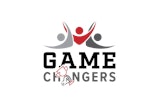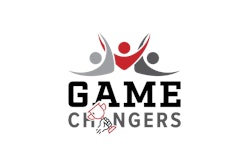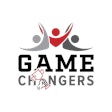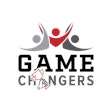 Karissa Niehoff
Karissa Niehoff
For years we’ve been reading headlines and op ed pieces, usually in the wake of tragedy, arguing that football at the high school level should be abolished. What do you say to people in 2024, with multiple deaths reported in the first weeks of the season, who hold that viewpoint?
I hope can broaden perspective and advance their level of awareness about what we’ve been doing around the sport at all levels, from the professional NFL level on down to youth sports, collaboratively. I don’ t know if people think this far back, but in 1968, I believe, there were 36 deaths in football. And, you know, we were practicing differently. Contact time was much greater. You had the “bull in the ring” drill. You had the head being used as a spearing instrument and really the encouragement of more violent tactics. Starting in the mid- to late 2000s, when we started to pay attention to head injuries, people said, “Oh, my goodness. There are an awful lot of concussions in the sport of football.” So, we engaged researchers. The NFL gets on it, the NCAA gets on it, we get on it, and we do some research and realize that the kids were using their head as an instrument. We needed to cut that out. Contact time was too much, number of games per season, number of quarters per week, all sorts of things at the high school level started to be implemented in the form of rules change requirements. Now, all 50 states require concussion-awareness training. All 50 states now have a Sports Med Advisory Committee at the high school level. All 50 states have changed their practice and contact guidelines around high school football. And, as a result, we’ve seen a reduction in catastrophic injuries to the head and deaths, all of which is horrific. We’ve advanced our educational requirements around heat illness, cardiac awareness, emergency action planning, training in AED and CPR. All of these educational efforts are getting to schools, getting to coaches and getting to kids and families. So, we’ve seen a dramatic reduction in catastrophic injury and fatality.
Considering equipment and rules modifications, athletic training and AED availability, heat precautions and protocols, the game-day presence of ambulances and paramedics, what grade would you give to where we are now in terms of making football as safe as it can be? It’s a violent sport, and safety can never be guaranteed, but do you still see room for improvement?
We’ve risen in our efforts and awareness to an A level in terms of what we’re doing in the scholastic space. Obviously, if you’re going to get hurt in the sport of football, the sideline you want to be on is the NFL sideline. They have tremendous resources there. I think what you said is the steady truth. The sport of traditional tackle football, although it’s changed, is still the highest-risk sport that we have in high schools, based on data. And that’s not just concussions. It’s limbs. It’s any part of the body. But the injury rate has been greatly reduced. We can do better with understanding what sort of congenital conditions might be coming into practice now, and the reality of resources available to schools is such that it’s not equivalent to the resources you have on an NFL sideline. There isn’t the training that’s so supported and prescribed and monitored. The concern that we see right now, is that most of our fatalities are a result, we think, of cardiac conditions. Were they triggered by something we’re sure of? No. It’s very sensitive to try to get autopsy details, if one is even done. We know that fatalities happen primarily in the hottest months — preseason and September. The first five reported to us this year were cardiac issues. There were AEDs on site. They were employed. Paramedics were there right away. The emergency action plan kicked in. But, unfortunately, we lost the first five, we think, to cardiac situations. The next two were contact-related, and now we have a couple we’re just not sure about. Over the last few years, the NFHS Foundation has provided AEDs to high schools around the country, and most recently — millions of dollars invested in this — providing wet-bulb globe thermometers to high schools so that they at least have a tool that can be programmed to measure heat and humidity standards and then trigger an alarm that says, “Cut it out. Get inside. We’re done.” There’s a blinking light. Coaches are texted. There are sounds. We gotta get kids off the field. So, we’re trying to work with our state associations through educational effort, providing resources, regular meeting conversations, working with the National Center for Catastrophic Sports Injury Research, working with our colleagues at the pro and collegiate levels, our own Sports Medicine Advisory Committee, researchers. There really is heavy effort and intent, working together, to pay attention to every individual situation. Could we have prevented it? Did we have the information we needed, and did we respond as best as possible when something happened? And then, as you said earlier, the hard truth is that there’s a risk to playing sports — any sport. There’s a risk to putting on a band uniform that’s made up of any kind of fabric and band practice is in the parking lot. We just released a course, “Heat Illness in Band.” We put it on our Learning Center, because we’ve had kids and officials go down in the performing arts, even on theater stages, under lights, on concert bleachers. We’re trying to advance our educational resource bank to make sure that all of the areas of involvement for kids are addressed and we get information out to the people in the schools to help improve practices around health and wellness for kids.
Another unfortunate topic that has emerged is violence at games. Have you noticed, since your days playing and coaching at the high school level, a significant change in venue security?
Absolutely, I think, within a society that’s changed in terms of how we treat one another — civility in crisis, perhaps. We’ve had over 200 school shootings this year.
The defensive coordinator on Apalachee’s football staff was one of the fatalities in the Georgia shooting.
A math teacher. The principal at Sandy Hook Elementary was a good friend. I was in Connecticut the day that shooting happened. I knew some of the police involved. The superintendent was a good friend. You know, it’s horrible what we’re doing. But you know, since Columbine, since Sandy Hook — I mean, pick a site — Uvalde, it just continues. There’s been an uptick in the level of extreme behaviors that are not acceptable. And then with social media making it more visible to anybody outside the situation, that kind of numbs people and normalizes it. At the same time, though, we’ve seen an emphasis on sportsmanship, good behavior, so we’re really not seeing this stuff going on between student-athletes and their opponents, or between coaches and their opponents. This really is fans, other people. It’s social media. I’ll call it social violence, and then behavioral violence. It’s become sort of bigger rocks with bigger ripples that extend, and we’re very concerned about that.
What — in terms of after-school extracurriculars and sports, and the sports venues themselves — are schools doing to make them safer from a fan violence perspective?
Great question. We are very, very concerned about the creep of what has been called school violence now starting to occur at after-school events, specifically sport events. The shootings in parking lots of stadiums, not necessarily at our players or staff, but somebody they’re mad at. Somebody’s got a gun on them, and there’s been an uptick in those situations even before you can get into the venue itself. Schools are doing their best to protect their venues. The easiest spaces to protect are anything that’s walled — the building, going through a security system, getting into a fenced stadium. However, you’re still out in open air. Are schools across the country even able to have a fenced-in stadium or field? Then you have practicing and playing on multiple fields at the same time, probably not all of which have the AD on site or security on site. Most of the high schools across America are actually small and don’t have the resources to be as nicely developed, built and protected as some of our bigger schools. We have to remember the reality of the current high school situation across the country. So, what we do in in that situation is our best to educate athletic directors, school administrators, state associations by giving them resources — from coursework to toolkits to PSAs — that can be personalized. Meetings, seminars, webinars and sessions at national gatherings and section meetings like the ones we’re at, inviting experts to come to the table to say, “What do you see in the research?” Bringing exhibitors to our conferences to talk about the latest in technology, engaging in grant programs and just doing our best to stay educated, to stay in touch and be as responsive and proactive as we can be. And sometimes doing those at the same time isn’t enough prevention to save a life, but we just need to keep paying attention nationally to the level of need that our schools have to be as ready as possible.
What about fan behavior as it relates to the participants themselves? We’ve seen a kind of an explosion of parents and others who are becoming more vocal and, in some cases, physical at these games and its impact on the nationwide officials shortage. Is the NFHS doing anything about fan behavior and its ripple effects, to use your metaphor, in terms of people who want to referee and officiate these days?
We’ve been doing a couple of national campaigns for years. The first thing is our “Become an Official” campaign, and within that is capturing data, communicating what we’re learning from the officials community. Over 30,000, for example, filled in a survey that took 45 minutes, talking about their lifestyle as an official and their pain triangle. We translate that data into coursework, into our national campaigns, into working with states to recruit, mentor and retain officials. And we’re actually seeing the numbers in high school start to creep back up. We’re also started a campaign a few years ago called “Bench Bad Behavior.” This is providing resources and messaging, social media toolkits, PSAs, around addressing poor behavior and getting at the fact that we’re not going to tolerate this. What states and schools are starting to do is implementing ejection policies. Let’s say it’s a three-strike policy. The first time you get caught being unacceptable, you leave the gym. The second time you leave for a year. The third time you’re not coming back. So, we’re seeing some states start to get a lot tighter and more heavy-handed when dealing with people who behave badly and should know better, and I think it’s wonderful. You know, 96% or so of high school student-athletes will not go on to play in college, so we’ve got to calm down. We have to remember that this experience is for those kids, and if you’re behaving badly, you are ruining it for the kids by distracting them, embarrassing them, and embarrassing yourself, honestly, by setting a bad example. And when it gets physical, then we’re subject to all sorts of other legal issues, so schools are really starting to crack down.
Name, image and likeness at the high school level. Did you see this coming, and are you okay with it?
Yeah, we saw it coming. Anything that’s going on at the collegiate level, we see coming. It’s obviously different. Again, our kids, as I just said, 96% are not going on to college to play sports. However, where they are, if they have talent, they’re valuable and they’re marketable. And the truth is, kids do own their name, their image and their likeness. What we tried to do right away was not stiff arm this thing, not stick our head in the sand, but work with our states to say, “Do we agree that kids own their NIL, but they don’t own their high school jersey?” So, right now, there’s no state statute that says a high school student-athlete can become engaged in an NIL professional contract while representing their member high school. I say member high school because it’s our state association member high schools that we pay attention to. There are private schools that might be doing something different. There are academies that exist for very different reasons. But our member state associations are almost 20,000 high schools. They may be able to engage in NIL deals, but they’re not able to do it while representing directly their high school. Now, here’s what we’re starting to see emerge. We’ve had booster clubs for years, and they would bake brownies and do car washes and all sell entertainment books, you name it, and give money to a team, not to an individual. We’re starting to see outside non-school-affiliated collectives adopt almost like an imposter booster club model, where they invite people to join their group to donate money to support a school team, and it does not specify how the money would go to the individual athletes. Individual athletes are invited to join the group, sign up. They’re allowed to put their picture on this site. And what we’re starting to find is, in some states, high school student-athletes are putting a picture of themselves in uniform on these websites that are collecting money from outside supporters and are telling kids, “This money’s coming to you.” It’s getting around the age-old Booster Club model that we have always kind of not touched anyway, because they don’t operate the same across schools. We’re also seeing a lot of groups introduce themselves at the leading educational organization for parents in high schools. “How to Best Maximize Your NIL at the High School Level.” We kind slap our hand to our forehead, and say, “Oh, brother.” How are they experts at what’s going on inside of school? They’re not even former teachers or coaches.
These are for-profit business ventures?
Yeah.
NIL at the college level goes hand in hand with the transfer portal, which created the freest free agency in sports. I’m guessing that kind of transferability for high school students isn’t quite what it is at the college level. Are you seeing students going from one high school to another because their earning potential at that second high school is greater? Is that happening yet?
Yes. We’ve always had transfer concerns where kids are trying to transfer and do their best to say it’s not for athletic purposes. But, quite frankly, we’re seeing some places where kids are moving. Parents are physically moving addresses so the kid can go to another school, and I don’t believe it’s for their math curriculum. They’re claiming hardships. “The school couldn’t meet my needs.” My goodness, they’re giving up guardianship. They will physically, legally allow someone else to be the guardian of their child. It just makes you shake your head. So, there are a number of strategies parents have been employing for quite some time. We think NIL opportunity, probably mostly misguided, is, in fact, influencing the level of energy and fight that parents are demonstrating to get their kids to move. We had one state that I just met with last week that said they’ve already had over 200 transfer appeals at the start of the football season. And it’s across sports. It’s not even just football. They had over 200 already.
And you’re thinking that’s at least partly NIL driven?
Yep. And you just hurt for these families, because if high school kids enter an NIL deal, they might make 50 bucks, and it’s to get on the billboard at the pizza restaurant.
As with the dangers of football, there’s a ton of opinion about transgender sports participation. Where do you stand on the individual who has transitioned and just wants to experience all that high school has to offer vis-a-vis a cisgender girl who fears her chances of championships and scholarships are jeopardized by transgender inclusion?
Full transparency, I was leading the Connecticut state association when we had the track athletes. The first thing we say to anybody is that wherever a young person is going to school, they have state statutes. You have to follow your state law, whether you like it or not. And in some states, like in Connecticut, gender identity was part of the antidiscrimination clause, so you couldn’t discriminate against anybody based on gender, gender identity, race, religion, ethnicity, you name it. It was all in the antidiscrimination language. So, our state association said, “You know what? That’s a state statute. We’re not medical doctors. We’re not in the business of investigating gender. So, you schools give us your rosters. Just tell us who your girls are and who your boys are.” In some states, statutes are different. What I really believe is that we have to have a thoughtful conversation about age and stage. We also have to consider some of the other statistics that are unique to transgender or non-binary kids. It’s kids struggling to be kids when you have suicidal rates or ideation rates that are 40% or higher. These kids struggle. And this isn’t about winning or losing medals. Let’s think about all of our kids. How old are they? Are they getting the support they need? And, of course, are there health and safety things involved? Because the real issue is transgender females. Transitioning to female, they’ve been biologically functioning as a male until the transition. The body’s had a different experience. So, we have to pay attention to health and safety and make smart decisions about that. But all the while, mental wellness has to be at the top of the priority list in terms of attention. We’ve got to make sure these kids belong. We ask our states, how many transgender student-athletes do you have in your eligibility rosters? Some of them don’t even know, some of them say a handful, and some of them say maybe 10. We’re not even really sure. So, it’s very hard, even nationally, for us to say what’s the number.
Critics suggest giving them their own division to compete in, but there just might not be enough of them, right?
There aren’t. There really aren’t. I’ll give you an analogy. Sometimes we get criticized because we don’t have a number of championships for Paralympic sports. In many states, we don’t have enough identified student-athletes in the Paralympic category to create a complete division and championship. We see wheelchair track, or we’ll see some swimming. It’s really complicated, but at the core of it all is, how old are these kids we’re talking about? I think once you become an adult, if you’re going into elite competition, you have bigger stuff at stake, and certainly at Olympic, collegiate and professional levels, a different level of ability. There are different medical standards in place for an 11-year-old. You’re not a 24-year-old. Let’s be careful with age and stage.
Title IX recently turned 50. Coming up through the ranks as you did as an athlete in girls’ and women’s sports, and a coach and administrator, is the law working in 2024 as originally intended?
Yeah, I think the law is working. You know, it’s taken some time, and it’s still a priority for us. Because it’s a priority — and we’ve seen some terrific changes — it’s working. Historically, athletics were not even mentioned in Title IX. It was developed, really, to address educational inequities and federal funding. Obviously, athletics are connected to education and federal funding, and athletics are highly visible, so right away there’s a necessary alignment with athletic opportunities. Our participation survey that we did most recently, as accurate as it can be, has just over 8 million young people in high schools playing sports. If you were to carve out the sport of tackle football — which has about 1 million young people, over 4,000 of whom are girls playing tackle football, by the way — it would be a dead even number of girls and boys playing high school sports. So, we’re pleased about that — the equity in program offerings, financial resources. Facilities — we see some inequity there. For example, the baseball field might have lights and nice dugouts. Softball might not have lights and nice dugouts. But we’re seeing things come together, really, much better. And we’re watching what’s going on. The Caitlin Clark effect — she did an interview the other day, and made a comment, “We’re still not getting paid enough.” I think as we start to call attention at all levels to where there are still inequities, we’re going to address it. But we’ve seen tremendous growth. In 1972, I think we had just about 300,000 girls playing high school sports. We now have over three and a half million. That’s terrific.
A release dated Sept. 21, 2023, said high school sports participation was rebounding to near pre-pandemic levels. Can you tell us anything about the latest participation analysis?
You bet. We just released it. We have the highest number ever, just over 8 million.
It occurs to me that there has never been a more volatile period in the history of high school sports than the one we find ourselves in right now. Would you agree with that?
Absolutely, 100% without question, yes.
And you sound like you are completely satisfied that you’re in the position you’re in to meet this moment.
Well, I can promise you the NFHS will do its best. The U.S. and Canada are really the only two countries that have athletics as a part of the educational day — call it the second half of the school day. Other countries are strictly club model, and that’s fine. But for the United States, we, the NFHS, do feel like we are in a position to strongly underscore the significance of education-based experiences, opportunities for kids that they may never have as a part of their public education. School is the one place all kids have to go. Taxpayers pay for kids to go to school and they can play somewhere, join something —other than maybe schools that have pay to play, which I don’t like, personally. And I think we have the infrastructure through schools — leaders, ADs, parents, coaches — that is set up to be a network that can pump education and monitoring and assessment and proactivity through. But things like NIL, the transfer portal, you know, the biggest concern for our state associations right now is legislative intervention. That is the number-one concern.
Meaning what?
Perhaps there’s a legislator who gets a constituent who says, “I don’t like the rule, and I need it changed,” or the legislator doesn’t like a rule, so they might propose a bill and roll the grenade in the room, and it’s really challenged our state associations.
You’re talking about politicians getting involved in the work that you’re trying to do.
Yes, the work states are doing, and they’ve really bothered some states over the years and gotten involved, and they’ve overturned state association regulations and bylaws without a real deep understanding of how those bylaws came to be. So, we’re paying attention to that, to protecting the integrity of education-based experiences, to protecting our kids and working with other sport organizations to send a broader message about what matters and how we do this in the best way we can. I think the business around NIL and transfers, all this, alongside the behavioral issues that you mentioned earlier, alongside the injuries and school violence, I think things are functioning at a higher heat level here across the board. For us, it means we ramp up what we’re doing. We become more vocal. We produce more resources. We get out there and get at as many tables as possible, and really try to bring the voice of reason to what people are thinking about. What’s the best way we do this?





































